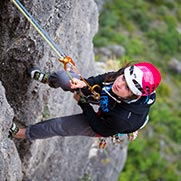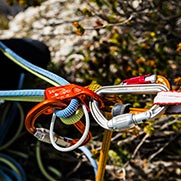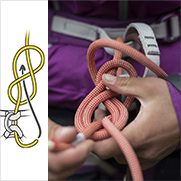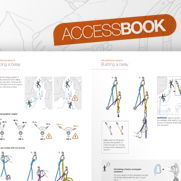Choice of harness attachment point for the ASAP
Warnings
- Carefully read the Instructions for Use used in this technical advice before consulting the advice itself. You must have already read and understood the information in the Instructions for Use to be able to understand this supplementary information.
- Mastering these techniques requires specific training. Work with a professional to confirm your ability to perform these techniques safely and independently before attempting them unsupervised.
- We provide examples of techniques related to your activity. There may be others that we do not describe here.
Examples of harnesses with an A (fall-arrest) point:
Particular case:
The choice of harness attachment point has an effect on:
- Working comfort (ASAP and absorber in front or behind the worker)
- Worker autonomy (can the worker install the ASAP themselves, or not)
- The post-fall suspension position, especially if unconsciousness occurs
Ventral (sit harness without fall-arrest point)
- The ventral attachment point is not an A (fall-arrest) point
- Risk of inversion if the victim is wearing a pack, or has a heavy object attached to the harness
Sternal
- Position is more ergonomic when suspended
- Rescuer can easily manage the victim’s position
- The ASAP can take up space in front of the user during work
Dorsal
- Clear work space
- Uncomfortable position when suspended: abdomen and airway squeezed if the person is unconscious
- Difficult for rescuer to manage the victim’s position








